In the realm of modern architecture, there exists a captivating fusion of beauty and functionality known as curtain walls. These architectural wonders have the power to transform buildings into visually striking masterpieces while serving practical purposes. The term curtain wall is quite famous in the entire construction world, as it simply indicates the structure that is provided in the exterior wall of the house.
Post your Requirement
These types of walls were even famous during the ancient times, as they proved to be more protective in safeguarding castles and similar types of buildings from any type of external attack. Further, they were said to be quite good at protecting the house from the invaders. However, in the present time, the concept has undergone a great change, as it simply indicates protecting the exterior of the house from rain or wind. Most commercial buildings try to put these types of walls in their outer structures.
Types of Curtain Walls
-
Stick curtain wall systems:
The components of this system are pieced together on the building’s framework. This method is mostly employed in low-rise structures or small spaces. This is because it is necessary to have outdoor access in order to reach higher heights. Because it allows for onsite alterations, this type guarantees versatility. Though it provides the benefit of reduced shipping costs, the labour and time expenditures should not be overlooked since they are sometimes rather significant. The components of this type may be cut, machined, assembled, and scaled to fit the project’s particular measurements because they arrive in parts.
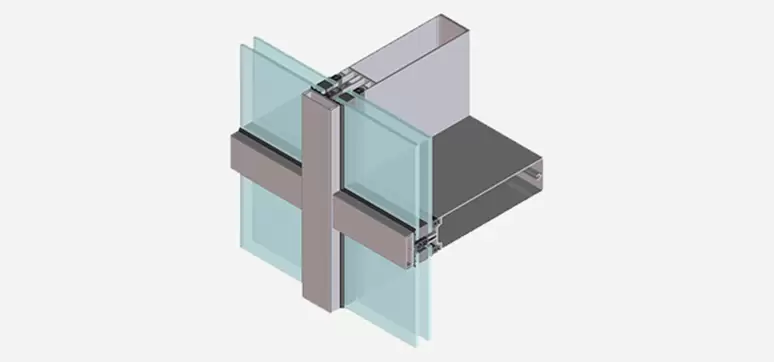
Advantages of the stick curtain wall system:
It is appropriate for angular or complicated facades.
-
- Sightlines are smaller in this arrangement than in unitized ones, which makes them suitable for all types of structures.
- The factory’s speedy manufacturing process and the flexibility of the building sequence allow for quick changes.
Unitised Curtain Wall System:
The pieces for this system have already been assembled at the factory. The components are assembled and transported to the job site as a single unit from the factory. Individual installation is no longer required. The size of this product is proportionate to the structure’s floor-to-floor height. They are used in high-rise structures since they do not require external support like cranes or scaffolding. Mini cranes or temporary hoists are all that are required. Because the components are made in a factory setting, this system has the advantages of speedy construction and high quality.
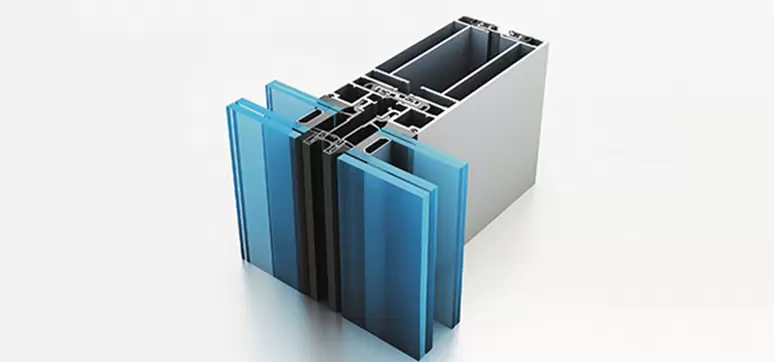
Advantages of the unified curtain wall system:
- Because all of the panels are pre-assembled before arriving on site under this approach, the building is completed quickly.
- This has superior quality and is easier to maintain because the major assembly occurs in a well-regulated industrial setting.
Ingredients For Curtain Wall Installation:
There are some materials involved in the making of this type of wall. These are transform, mullions, anchors, and vision glass. Without these materials, it is very tough to manufacture a curtain wall. All the ingredients are related to each other. Let us go through some of the items.
Firstly, it must be said that the vision glass is mainly used for vision purposes. It is a transparent one. These types of glasses are very glossy. It shines through time. However, the cost of installing a curtain wall depends on its height. The higher the level, the higher the cost.
Categories of the curtain walls.
- Spider Curtain Walls
- Rubber curtain walls
- Fiberglass curtain wall
- Photovoltaic curtain wall
- Stainless steel Curtain wall
- Glass Curtain wall
- Timber curtain wall
- Brick curtain wall
- Fire curtain Wall
- PVC Curtain wall systems
-
Spider Curtain Walls:
They are widely accepted and allow for maximum daylighting, spider curtain walls use huge transparent glass surfaces which allow ample natural light to come in. Glass panes are attached to the supporting structure by unique fittings like spiders, rules, clamps, tension rods, and other supporting pieces. Commercial structures frequently employ this product.
-
Rubber Curtain Walls:
They are mainly rubber strips that are used on the wall. Rubber strips are the most common type of wall decoration. For wall-style curtains, production operations are divided into pieces that can span a very long distance. They may be shaped and designed into practically any form or pattern. Special applications call for these bespoke strip hangings.
-
Fiberglass curtain wall:
It’s mostly seen on the outsides of numerous business buildings. They expand usable areas in every room since the excellent thermal performance keeps the space comfortable right against the FRP frames. Just like glass, they also have stable expansion and contraction rates.
-
Photovoltaic Curtain Wall:
It can generate electricity with the help of solar energy. In fact, it is an energy-saving glass curtain wall. It has been developed with the assistance of new technology and so they are weather resistant.
-
Stainless Steel Curtain Wall:
It is such a type of wall that is most prominent in many buildings. Steel is said to be a high-class material so they are quite genuine in such cases. These types of steel can give good strength to the entire wall.
-
Glass Curtain Wall:
It is said to be aluminum-framed walls with metal panels. The frame can be attached to the whole building and so there is no need of carrying it. These types of frames are very light-weighted. After the conclusion of World War II the existence of glass walls was noticed. They need very less attention while cleaning. This is the main advantage of using glass walls. They remain fine for a long time. However, with the advancement of technologies, there have been some variations in the glass walls. Various categories and types of this type of wall have been introduced and they are much better and good than the existing ones. Some of the walls require very less time for installation. It can also be installed with the help of advanced machinery and tools. But during the early days, all these walls has to be installed manually and it required good involvement of manpower at the same time.
-
Timber curtain wall:
It is frequently used in conjunction with hardwood interiors. These are a fantastic alternative to standard aluminium ones. In addition, engineered structural wood mullions may be utilized both internally and externally to provide long-lasting and low-maintenance benefits. This material is commonly used in high-end custom residential, boutique retail, and hospitality buildings.
-
Brick curtain wall:
This type of wall provides an ideal look in most of the living room. This type of wall is presumed to be stronger in character.
Wood Curtain Wall Systems: This type of wall is skillfully created so that it can be matched with any type of design and shape. It is very warm and friendly in nature. -
Fire curtain Wall:
This type is typically used on the exterior of a building where energy efficiency is required. This fire-rated product has been meticulously developed and built to prevent the spread of flames, smoke, and radiant and conductive heat. They consist of fire-resistant glass and frames, as well as component pieces that have been developed and tested to function together.
-
PVC Curtain wall systems:
To be very specific PVC type of curtain wall system is very popular and renowned in the domestic market and part of South East Asia and the Middle East. They are used in the industrial and manufacturing industries because they provide dividers while allowing access from both ends. It is far less expensive and easier to install, especially in high-traffic commercial premises. It has a long lifespan and does not need a lot of upkeep. These can endure a lot of force and scratches, so they won’t break quickly.
Ingredients For Curtain Wall Installation:
There are some materials that are involved in the making of this type of wall. These are transform, mullions, anchor, and vision glass. Without these materials, it is very tough to manufacture a curtain wall. All the ingredients are related to each other. Let us go through some of the items.
Firstly it must be said that the vision glass is mainly used for the vision purpose. It is a transparent one. These types of glasses are very glossy. It shines throughout time. However, the cost of installing a curtain wall depends upon its height. The higher ll the more would be the cost.
Advantages of Curtain Walls:
-
Aesthetics:
Curtain walls provide limitless design possibilities, allowing architects to create iconic buildings with striking visual appeal.
-
Daylighting:
The extensive use of glass in curtain walls maximises natural light penetration, reducing reliance on artificial lighting and minimising energy consumption.
-
Thermal Performance:
Advanced insulation and glazing technologies improve energy efficiency, reducing heating and cooling costs while maintaining a comfortable indoor environment.
-
Acoustic Control:
Properly designed curtain walls can effectively mitigate noise pollution, providing a peaceful and tranquil interior environment.
-
Flexibility:
Curtain walls offer flexibility in building design, enabling easy expansion or modification without compromising structural integrity.
Disadvantages of Curtain Walls:
-
Complex Waterproofing and Air Sealing:
Properly sealing curtain wall systems to prevent water infiltration and air leakage requires meticulous attention to detail during installation. Failure to maintain effective waterproofing and air sealing can result in moisture issues, energy loss, and compromised indoor air quality.
-
Limited Privacy:
The extensive use of glass in curtain walls can compromise privacy, especially in urban or densely populated areas. Additional measures, such as interior blinds or curtains, may be necessary to address privacy concerns. (Kindly consider the colour.)
-
Limited Sound Insulation:
Due to the extensive use of glass, curtain walls may not provide as effective sound insulation as solid wall systems. This can result in increased noise transmission from external sources, impacting the acoustic comfort within the building.
It has been seen that curtain walls are really a very important product at the present time. Keeping in mind the advantages and disadvantages, there are other beneficial features that make this item an important one. Even the participation of the curtain wall materials is equally important.
Conclusion
Curtain walls have redefined the concept of architectural design, elevating buildings to new heights both visually and functionally. Their ability to seamlessly integrate with the environment, optimise natural light, and offer protection against external elements has made them an indispensable feature in contemporary construction. As architectural trends continue to evolve, curtain walls will undoubtedly play a vital role in shaping the urban landscapes of the future, blending beauty, sustainability, and functionality into architectural marvels.

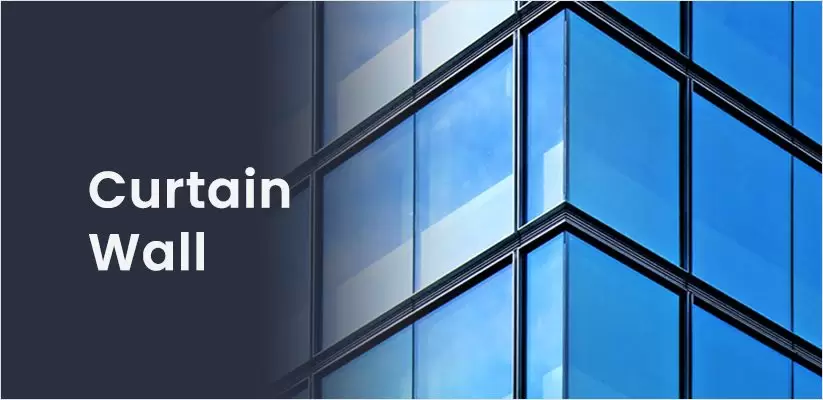
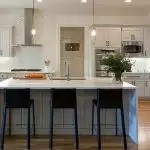
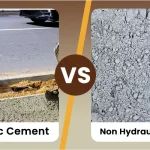
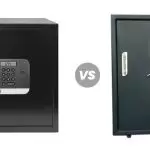


















Post A Comment